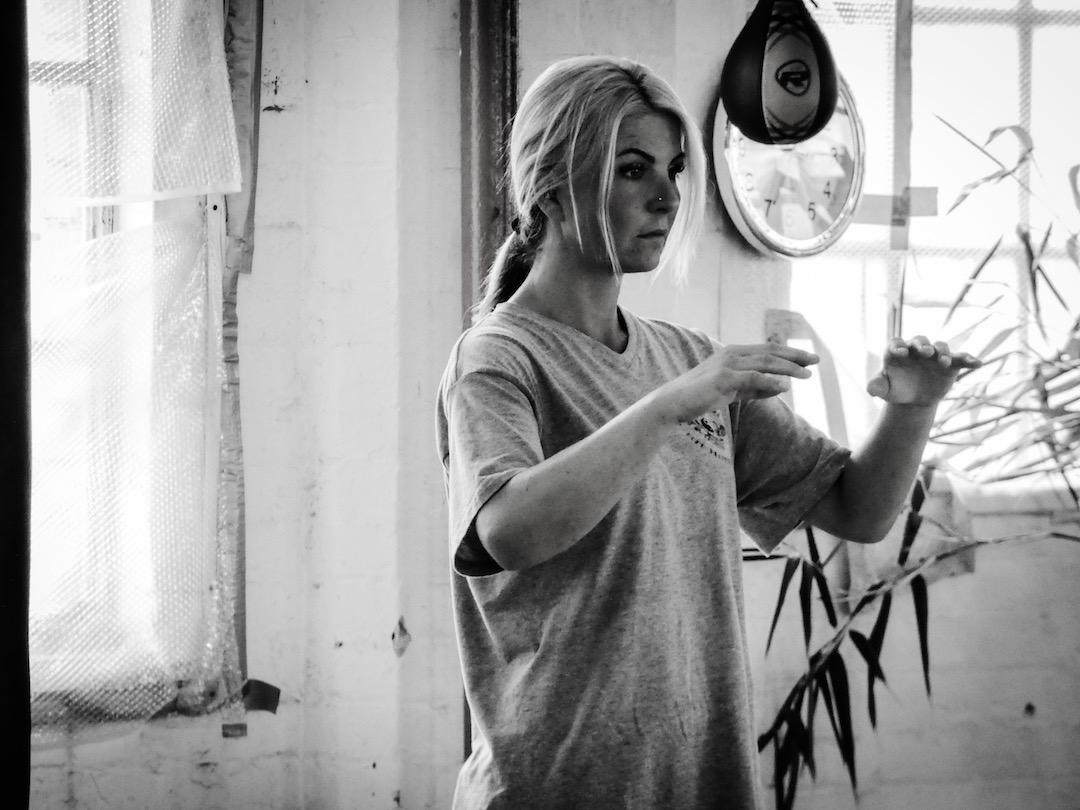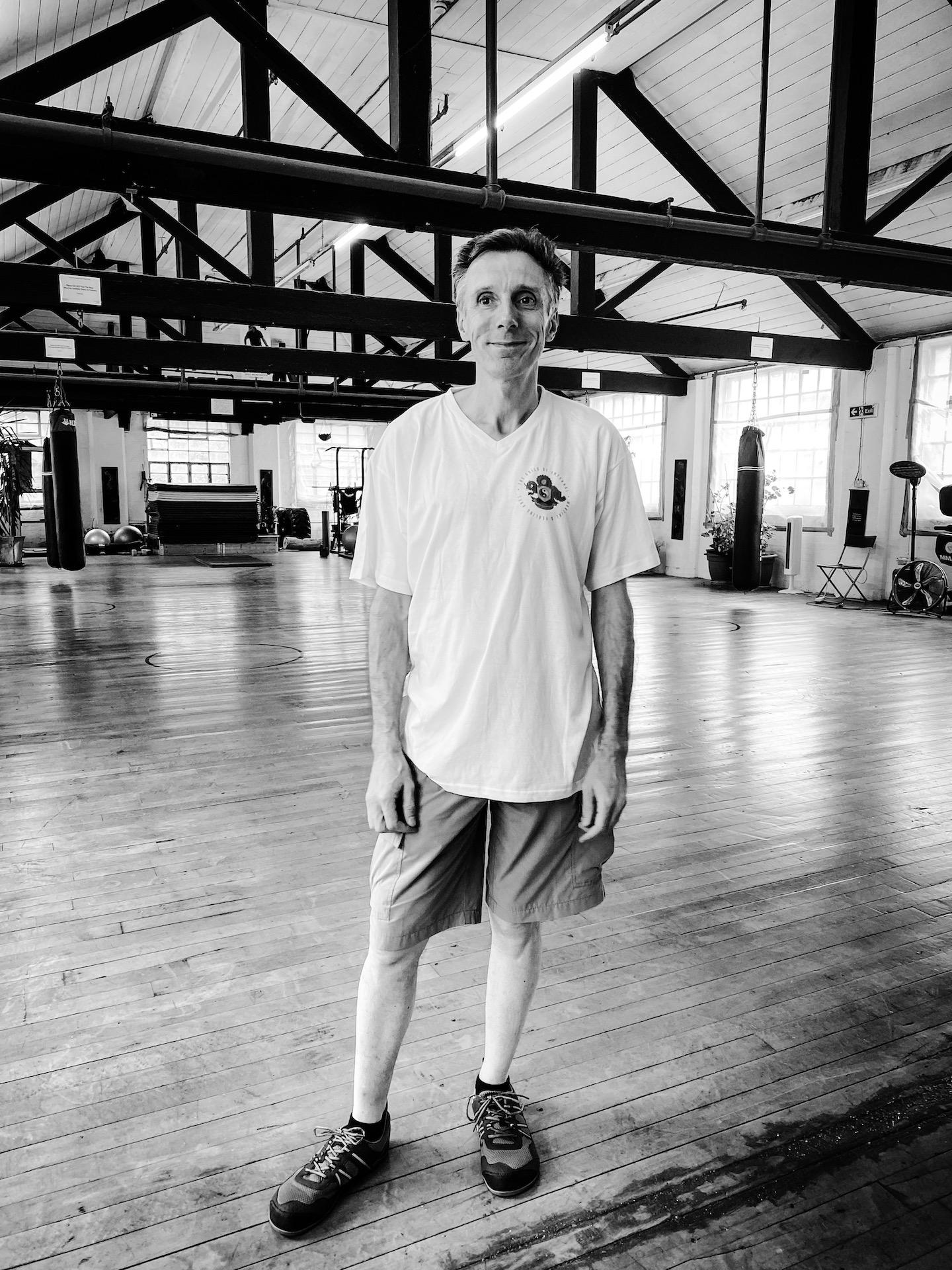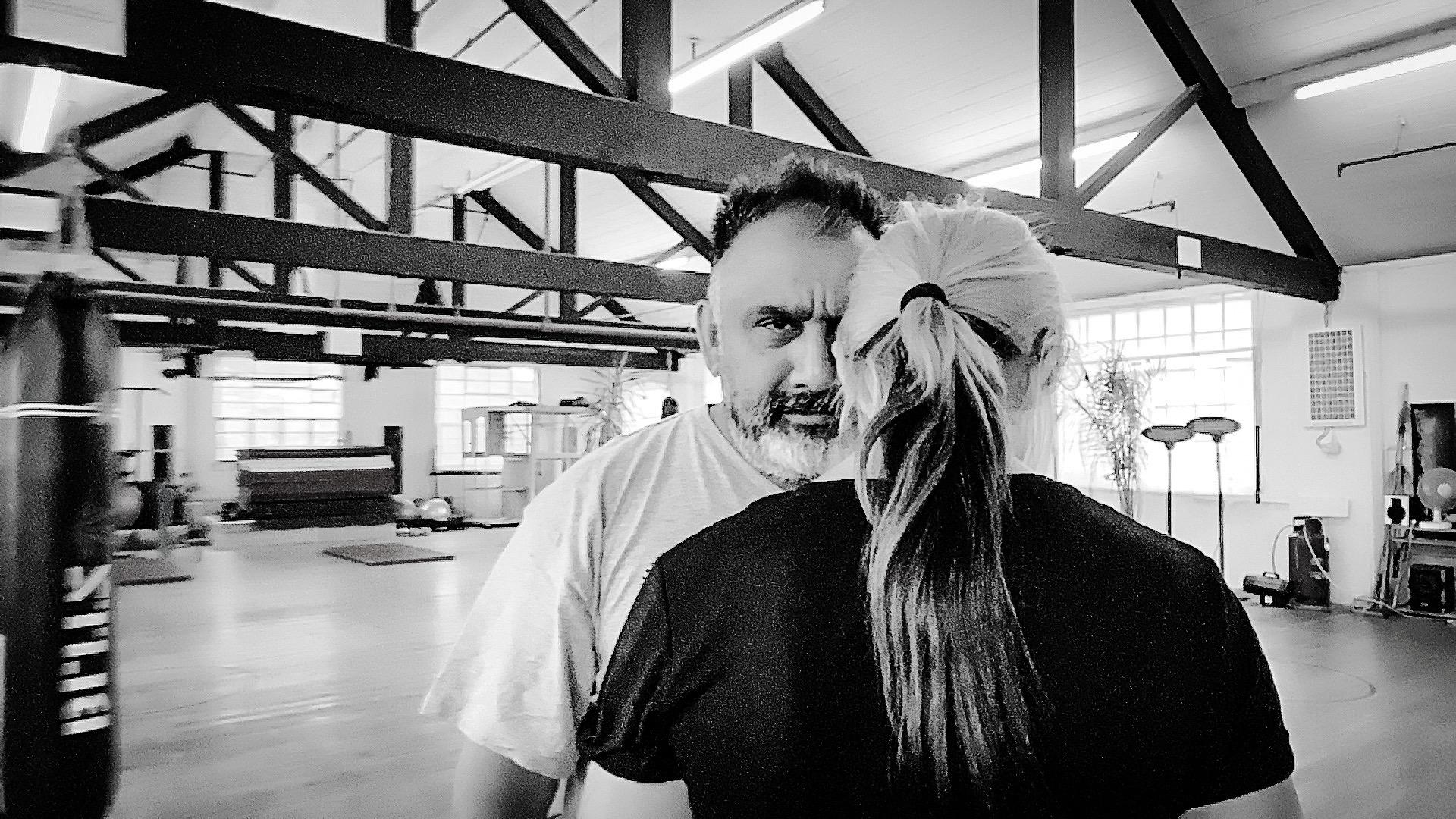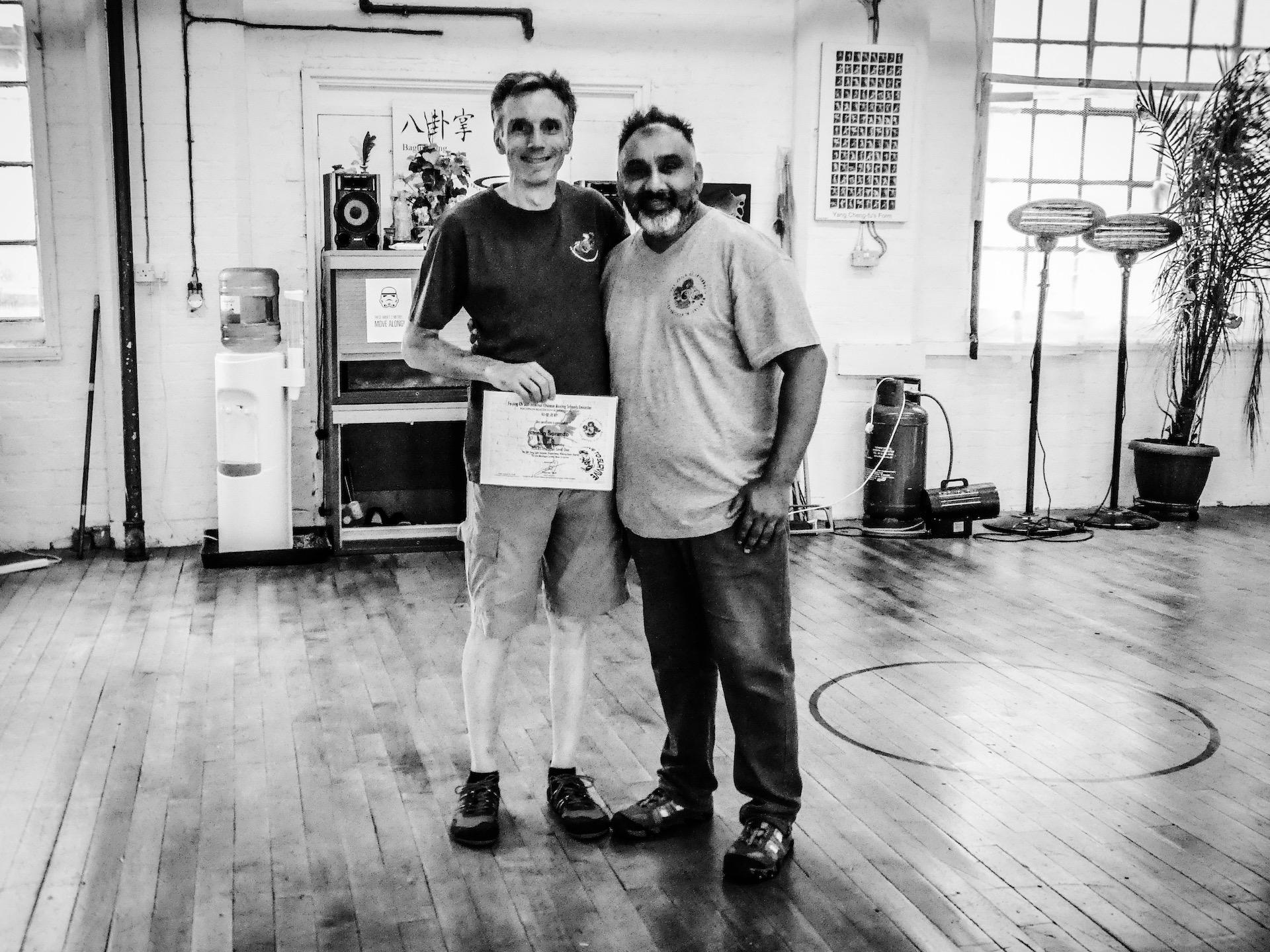
14 minute read
Summer Campus 2020 - The Next Level Ramon Soranzo
from Lift Hands Magazine Volume 15 September 2020 - The Multi-Award Winning Magazine of the Year 2019
by Nasser Butt
One of the socially-distanced group photos.

Introduction
This has undoubtedly been a special year for everyone. The well-known health emergency has affected the lives of all of us, in our health, in the economy and in the certainties about our future. I, too, was uncertain whether to attend the campus - in July there was still a lockdown in Leicester, then reduced to just a few neighbourhoods, and there was the fear of the quarantine, then removed, between Italy and the UK, while it was restored between UK and Spain, France, Benelux and other overseas countries such as Australia. Two participants from Belgium and the Netherlands had to give up at the last minute due to the closure of the UK borders unless a 14- day quarantine was done in some hotel! In the end, a healthy stoicism prevailed over the alarmism continuously fuelled by the mass media, convincing me to finalize the entire trip organization from Milano to Leicester. Nasser took care of my stay by contacting a hotel outside the city in a village near his home just to avoid any quarantine problems on return. After this long but necessary introduction, here I am finally at the Campus 2020 entitled “The Complete Small San-sau with Root Methods”!
Day 1
The 2020 Summer Campus started Friday, August 21 in the afternoon. We were about eight participants, most of them Nasser’s students or senior instructors and practitioners in Leicester and Coventry. Unfortunately, the restriction of mobility among the Great Britain regions limited the number of further interested participants from Wales, Scotland and England. Though not a necessary requirement for participation, we all shared a common background of practice in Taiji - Old Yang Style - and most of us had already attended the 2019 Summer Campus and the following Cyprus workshop in the October. This allowed us to start from a solid base of concepts covered last year such as Sung State, Three Circles Qigong in its Four Palm variants, applications to the Form, thus being able to concentrate on new topics which this year have been many and tough!
We began with a powerful Qigong taken from the 4th Dim-Mak Cornerstone: The Mountain with slight adaptations combining the Yang/Ying components and the 3 Circle Qigong. Mountain because it represents the cone - large at the base and narrow at the top. The volcano has this characteristic, it accumulates energy at the 39
base and releases it in an explosive way through the crater. Likewise, this qigong is aimed to store and pack Qi into the Tan-tien to be used for health benefits or released explosively in self-defence. Further, it teaches us the active and passive components of the Taiji palm and all of the permutations in-between.
Explaining here how to execute it in detail goes beyond the scope of this article. However, I will broadly describe the external movements of the Yang part, whilst sketching the Yin part.
Yang Part: Stand in normal Qigong posture with hands in front like beginning the form, half closed eyes looking forward, tongue on upper palate and breathe through the nose. Breathe in and as you do that, your hands move out and circle upwards as the palm begin to roll and turn up. Your weight shifts from the left heel to the right heel and towards the ball of the right foot.
As you breathe out, the tongue drops to the lower palate, the palms roll and circle downwards, as your weight shifts from the ball of the right foot to the ball of the left foot and back to the left heel. To do it correctly you must have complete Sung in wrists as they roll.

You do this for seven breaths in total. Starting with large movements, each time the circles become smaller and smaller until by the 7th breath it is virtually invisible – the mind, however, continues to make big circles.
Developing The ‘Upper Heavenly’ Circuit Now, stand for 7 breaths, imagine energy coming up the backbone over the head and into the Tan-tien activating the upper heavenly circuit. The tongue remains on the upper palate during both inhalation/exhalation.
Yin Part: Immediately after finishing the Yang component, our hands start moving in and circle upwards as the palm turn up like the 8th palm in Baguazhang. Same breathing as Yang however you rotate in reverse and breath 8 times. At the end you now pause 8 breathes as the mind, as you activate the upper heavenly circuit!
As you close stepping backwards you go straight into your 3 Circle Qigong boosted from the previous qigong. When you cultivate the stillness for 7 and 8 breaths, for the Yang and Yin part, you can really feel the movements of large circles concentrated in still hands and, as in the volcano, you feel ready to explode releasing all accumulated energy. We are in a perfect Wuji state - in stillness and fluctuating at the highest potential energy! And it is also possible to feel the Qi or bio-electricity flowing on the arms and generating heat.
All movement in the Form, the Root Methods, the Small San-sau consist of these Ying-Yang spirals. Take for instance Brush Knee & Twist Step, Wave Hands like Clouds of the Yang Lu-ch’an Form or the opening and closing movements in Small San-sau above all others and you’ll recognize what has been explained so far! If we do not respect these natural laws, we would have movements disjointed and squared off that would not work for self-defence or health!
We continued with the Yang Lu-ch'an Root Methods that represent the seventh Ring of the Yang Family. They are short sets of movements which cover the advanced fighting methods of Taijiquan’s Form based upon dim-mak and fa-jing - giving us small, hard and explosive movements.
In this context, they add invaluable understanding on how 'energies' are combined, and they train the natural subconscious reactions in the self-defence applications ... with the brutality of the first Yangs.
When you learn them, you put a key into the lock and opens the door into the advanced level of Taiji and Small San-sau!
The first three Root Methods cover the same segments of the Small San-sau: “Grasping Sparrow's Tail”, “Fishes in Eight” and “Single Whip”.
The Root Methods can be taught only in situ. However, to get an idea of how they are performed you can see the video explained by Erle Montaigue himself!
If you like to begin to learn them from the video, I suggest training “Sleeves Dancing Like Plum Blossoms” in the YLC Form to your best whose footwork recalls the heavy movements of the Root Methods that often repeat in the forms.
By practicing them with dedication, you will recognize the Yin and Yang spirals that alternate in every single movement generating the fundamental ‘energies’. For example, in the “Cross-Step Rollback with Fa-jing” of the first Root Method the Yin and Yang spirals clearly manifest as well as in the last Rollback you have Yin spirals in
Enhanced Qigong: Cultivating Stillness.

both hands ready to explode in Arn, and so on and on.
As mentioned, there are subtleties in the execution that can only be grasped in situ, for instance how to perform a sequence of three different whip-hand strikes followed by a palm strike ... counting ONE!
The first day ended a little later than expected and we left with our brains literally cooked!
Day 2
We briefly recapped the arguments of the day before and then started with the Small San-sau (SSS) perhaps one of the best training methods of the Taiji fighting system.
Based upon the postures of “Grasping Sparrow’s Tail” up to and including ‘Single Whip’, the form has its origins in Yang Cheng-fu as opposed to Yang Lu-ch'an.
The form exhibits the four major energies of P’eng, Lu, Ji and Arn and teaches us a whole myriad of skills regarding the combative elements of the system including our understanding of combining long and short energy in a single motion.
Root Methods: Seize The Sparrow’s Tail

The SSS is a training method that has Five Levels, with H'ao Ch'uan being the highest level. At the highest level there is no solo version of the form!
In this Campus we were introduced to level four which - as Nasser clearly explained - Erle Montaigue never taught publicly on video or DVD, but only taught it orally, in class, to his personal students who had reached a proficient level of understanding.
What is this level four? Compared to the other known levels it does not involve changes but leaving the word to Nasser in his forthcoming book Small San-sau Unlocked ...
“We are gradually introduced to more ‘movements’ as we steadily head towards the advanced level until we are able to identify energies, small and large circles, connectivity, adhering, heaviness, lightness, passive and active, inversion, substance and applications, to name but a few.”
And this is where Nasser brought us starting from the previous Campus workshop in 2019!
After practicing the San-sau form, performed first slowly and concentrating on all the movements both the classic ones and the ‘extra’ movements, we trained the two opening movements Arn and P’eng in the two-person version. But not before spreading the sanitizing gel on our arms, hands and necks!
In the SSS, your partner acts like a 'Wooden Man' - he or she, in other words, is a punching bag!
There are only a few points during the SSS where your partner does “something other than throwing simple punches”. One of these is at the beginning, the Wooden Man can test the defender’s structure with predefined movements. For instance, your partner following his right/left hook may continue to force your block and break your structure. The Wooden Man can test also the defender’s rooting, with for instance a hinge intercepting your attack to his neck. And so on…
In other words, the work of the Wooden Man is not to compete! If the Man of Wood begins to compete, the practitioner fails to learn or develop properly!
Developing ... what?
Connectivity is one of the most critical concepts. The student must learn to connect with himself and then attach himself to his opponent! The Small San-sau is a 'master tutor' of connectivity. By understanding how to connect with the body, then with the mind and spirit - there is no opponent!
Developing the Small San-shou: Elliot Morris - Senior Instructor under Erle Montaigue - putting Andy Haynes through the paces!

In the Small San-sau one can train several variants to the classical Form. In the opening movement, for instance, both defender’s palms are slightly facing down, one on the opponent’s Neigwan, the other on his Stomach 9. So alternatively, you can strike the opposite side of the partner’s neck with the palm facing up and experience a different circle – now Yang. Or scraping the eyes with the palm facing up/down or striking the neck with the elbow if you are in a closer position.

After training all afternoon, we finished a great day two, tired but feeling Yang!
Moments of Magic
We had a great time at the Studio despite the city being partially in lockdown. During the breaks we ate food which Nasser had ordered from the restaurant near the unit and fruit and home- made cakes that Sylwia had generously made available. We spent our time sitting down to rest or taking notes or repeating the movements we had just learned, sometimes with the help of a classmate. We shared our experiences joining our hands to do push hands. Nasser answered any questions by showing the more advanced aspects with respect to the Campus itself.
All of this certainly affected the group’s learning, making each of us progress faster than had if we’d been practicing alone. That’s the magic of a Campus compared to simply learning from a video or a book. There is pure energy spreading among the participants on a subconscious level and the breaks also play an important role.
Among the various recreational activities, we tried and exhibited the new white and grey T- shirts from The Guild!

Final Day
We arrived at the final day of the Campus on Sunday August 23rd training the twoperson Small San-sau at level four. It is only with a sparring partner that you understand this great training method.
Unlike the solo form where you learn how to move your centre, the circles, the concept of mapping, Fa-jing and so on, it’s when you train with a real partner you learn to connect to the opponent without being awkward in execution as you bounce forward or even collapse on the Man of Wood.
Distance control is a key factor. Even using Fa-jing, you need to be able to control your blows just by touching or lightly hitting your partner, although in your mind they happen at full power!

There are two other points in which the Wooden man does something different. In the “Fishes In Eight” sequence - your partner intercepts your last Arn with a high P’eng in his left arm and launches with the other hand an upright punch at the height of your left ribs. Also, in the next posture he intercepts your left-hand blow to his temple with a right-hand P’eng and throws a straight punch with his other hand to your right ribs.
Here is where the ‘extra' movements start in the San-sau at the fourth level or more correctly - here is where the omitted movements for beginners are re-inserted into their correct place! They are here designed to accompany your blocks with a strike, hence requiring much more coordination. At this level, we have entered the area of combat or real self-defence.

In the two-person training it is not easy to find the perfect synchrony in movements, in which case it is necessary to slow down a bit. Non-competition is the key factor, but some energy from both partners must be put in anyway!


Grasping The Campus 2020… Tail
This Campus represented both an evolution compared to last year and a progression of the skills acquired in 2019. Summarizing by bullet points, on this Summer Campus we understood:
the difference between entering the opponent's circle or drawing the opponent into your circle, as the key in all fighting situations and in two-person training methods - push hands, da-lu, etc.; how outward and inward circles and spirals generate our answer to the above point, that is the primary energies P’eng, Lu/Rollback, Ji and Arn and - by combination - all other postures in Taiji Form (try them yourself!); the fundamental role of the module “Grasping Sparrow’s Tail” contained and repeated in all its variants, in the Form; the concept of active and passive, as the differential role of full-empty, heavy-light, right-left, high-low, continuously alternating in legs, arms and hands to get maximum power; how to reduce the circles to develop small frame in the Form and in the Fa-jing, through specific Qigong and training methods.

Finally, we were able to put all these key aspects into practice through The Complete Small San-sau which represents the apex of the training methods and, level four is what takes street fighting skills to a higher level than what is normally studied and practiced.



I have done my best to describe these tools, but the best thing is to learn from a very experienced teacher helping you with a physical touch or... by dropping a few grains or hairs of his beard to activate your internal transformation!
Conclusion
The Campus finished on Sunday afternoon and we had our brains cooked. But I’m sure that all this information will be released over time with continuous practice and training.


In the end, Nasser thanked everyone and mysteriously pulled out two diplomas. After a brief speech he gave to Tony Gough the grade of 2nd level Instructor of The Guild. Congratulations and good work as a teacher at the Studio!
I was hugely surprised when Nasser mentioned my name, giving me the grade of first level instructor. I must confess that I was amazed, and I thank Nasser and my classmates, for their support, something that enhances this award which I will cherish with honour, love and respect. It represents a constant commitment to train and improve.
I would like to conclude with an epic sentence from the film The Matrix, in which Morpheus tells Neo:
"There's a difference between knowing the path and walking the path"
What a deep lesson this sentence teaches to all of us!
In The Guild, we share this journey for knowledge as equals and, with an equal passion without jumps or shortcuts in order to achieve the highest levels.
Arrivederci Leicester and God willing ... see you in 2021!










